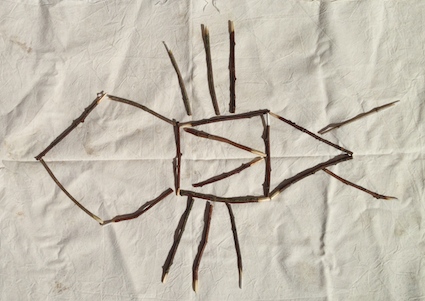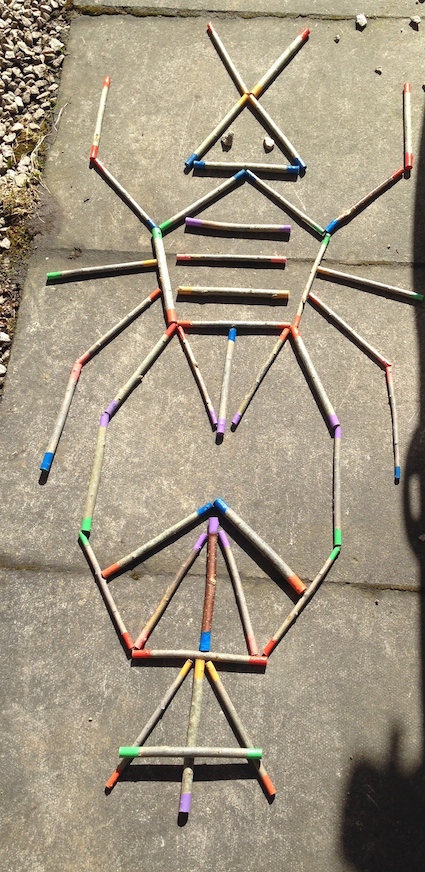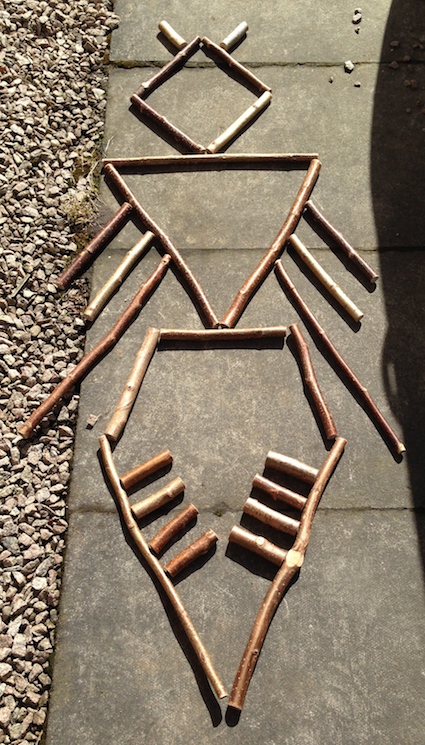
This is a very slick little maths challenge that can be easily differentiated. If your class are into minibeasts then challenge them to make a symmetrical stick insect.
Begin by asking children to think about what makes an insect an insect? Highlight the different body parts and characteristic features of an insect such as having six legs, a head, thorax and abdomen. The children may want to look at photos of different insects as a reminder too.
Outside ask your class to do one of three things, depending on your resources, age and ability of the class:
1. Gather sticks and create a symmetrical stick insect as highlighted on the white cloth in the photo above. This is a good opportunity to discuss sticks which are okay to collect, e.g. that have fallen on mown grass, and those which may be best left such as deadwood which has lichens, moss and other living material growing on it.
2. If you have a collection of rainbow sticks, then suddenly the challenge is changed. Look at the photo below. The colours need to be symmetrical as well as the layout of the sticks. This makes the task a little more complex.

3. If you have lots of sticks cut to specific lengths, such as the fraction sticks in this post, then children can not only create a mathematically more accurate stick insect, but they can also calculate the total length of the sticks used. In the photo below, this stick insect when dismantled became 7.25m long. It’s made from sticks which are either 10cm, 25cm or 50cm long. These can be homegrown and made if you have a willow structure that needs an annual prune. The Making Maths Sticks blog post may be of use here.

All-in-all this is a lot of fun – not least because of the word play on “stick insect.” How come it took me so long to work this one out!
This blog post was first published in May 2016.



















